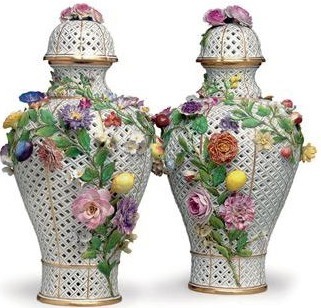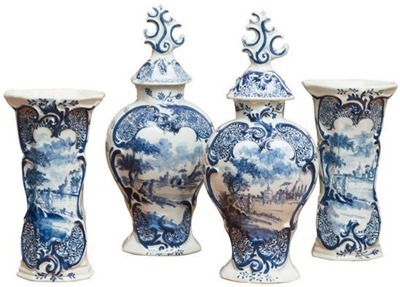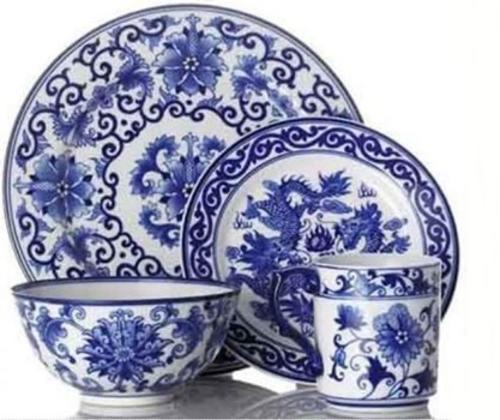Otherworldly
Beauty
and Strength
You may have come across items made of porcelain, china or bone china on Bob Shop… and had problems telling them apart.
You are not the only one. The situation is more or less clear with bone china (which has to contain bone), but the dividing line between china and porcelain is blurry.
Some say that china should be reserved for inferior quality porcelain. However, the majority consider that the two terms are synonymous and that people in some English-speaking countries informally refer to porcelain as china or fine china because China was the birthplace of porcelain.
To get things into perspective, we have to take a step back and delve into the history of porcelain.
How Porcelain Came into Our Lives
Porcelain is a descendant of ceramics. In that sense, all porcelain is ceramics; however, all ceramics are definitely not porcelain. To become porcelain, an object has to be made from a specific type of clay, with the addition of specific rocks; it has to be fired at very high temperatures; and it has to possess porcelain-like properties: non-porosity (even in an unglazed state), considerable strength, hardness, toughness, high resistance to chemicals and to thermal shock, as well as wonderful resonance.
Someone with poetic inclinations once said: “Tap a finished porcelain bowl with your spoon, and it rings hollow, like a metal cup. Glass shatters, earthenware crumbles; porcelain is otherworldly in its beauty and strength.”
Precisely such porcelain was invented in China more than two thousand years ago. According to a popular story, the name was given by the Venetian traveller Marco Polo. In the 13th century, Polo bought back from Far East a small jar and called it porcellana, because its shiny white surface resembled a cowry shell (porcellana in Italian).

Porcelain was white gold, valued for its beauty, durability and delicacy. The European nobility (for only the rich could afford it) could not get enough of this exotic ware. Naturally, entrepreneurs all over the old continent started looking for ways to manufacture porcelain closer to home, thus cutting costs and increasing profits.
The problem was that the Chinese closely guarded the secret of porcelain production. The Europeans managed to figure out that a type of clay, called kaolin, was an essential component. Then some more time passed before they discovered deposits of this mineral on the old continent.
All in all, it was only at the beginning of 1700s that the Germans and the French came with their own recipe for the manufacture of porcelain. After some experiments with the hard paste, they settled on the soft paste, which had glass or alabaster added to it. Around 1750 the English started mixing the ashes of bones into the compound and bone china was born. Each manufacturing process was, naturally, kept secret.
How Porcelain Is Made
Most experts divide porcelain into three main categories: hard-paste, soft-paste and bone china. As already explained, the two latter types came into existence as a result of desperate attempts of European manufacturers to emulate the Chinese technique of porcelain making.
Hard-paste porcelain is associated with the original, Chinese porcelain. It is made from a compound of the kaolin clay and the feldspathic rock petuntse, which is fired at high temperatures of between 1200°C and 1400°C. High temperatures allow kaolin and the mineral to merge and become hard and vitrified, producing white, smooth, glass-like, often translucent finish.

Bone china is often classified as soft-paste porcelain, but with animal bone ashes added to the kaolin clay compound. Traditionally, English bone china was made from two parts bone ash, one part kaolin and one part china stone. Today, it is considered that 30% of bones ash is the minimum for a good quality bone china. Bone china is praised for its warm whiteness and translucency, as well as for its mechanical strength and chip resistance. It can be produced in thinner cross-sections than other types of porcelain.
The Final Word: What Is the Best?
When talking of modern dinnerware, bone china is more appreciated than porcelain in Britain and the USA; continental Europe and Asia favour porcelain. Of course, there’s no competition when it comes to antique pieces. In this realm, Chinese porcelain reigns supreme, although collectors will be quite happy with the porcelain that they can find on Bob Shop, classified as: English (Royal Doulton, Royal Albert), Dutch (Delft), German (Meissen, Rosenthal), French (Limoges, Vincennes), South African (Constantia, Huguenote), or Oriental (from China, Japan, Korea).
In the end, what matters is the beauty of the object, the state it is in, its history and the way you feel about it. Enjoy browsing Bob Shop for your favourite bowl, vase or figurine made of porcelain, china or bone china!

